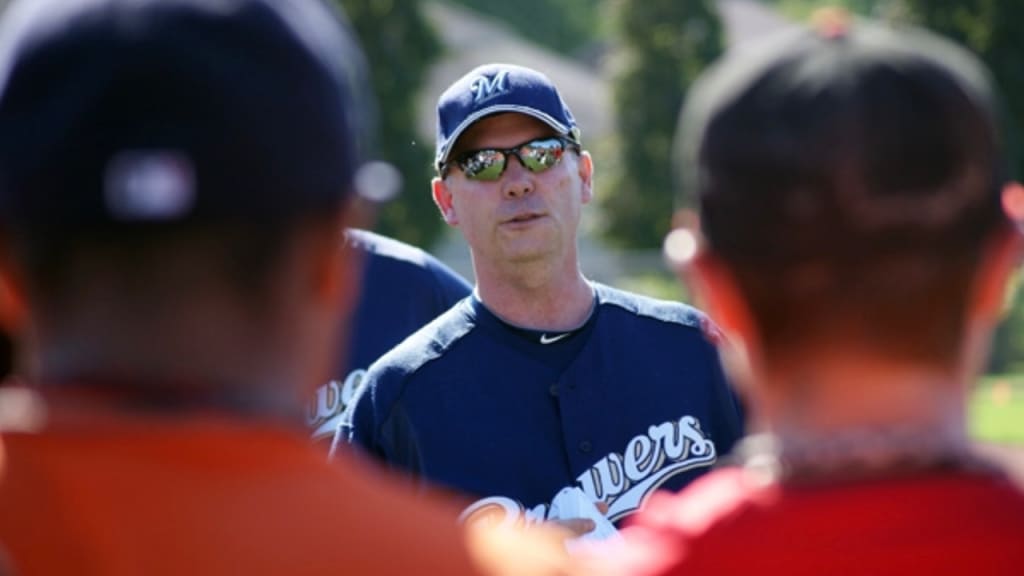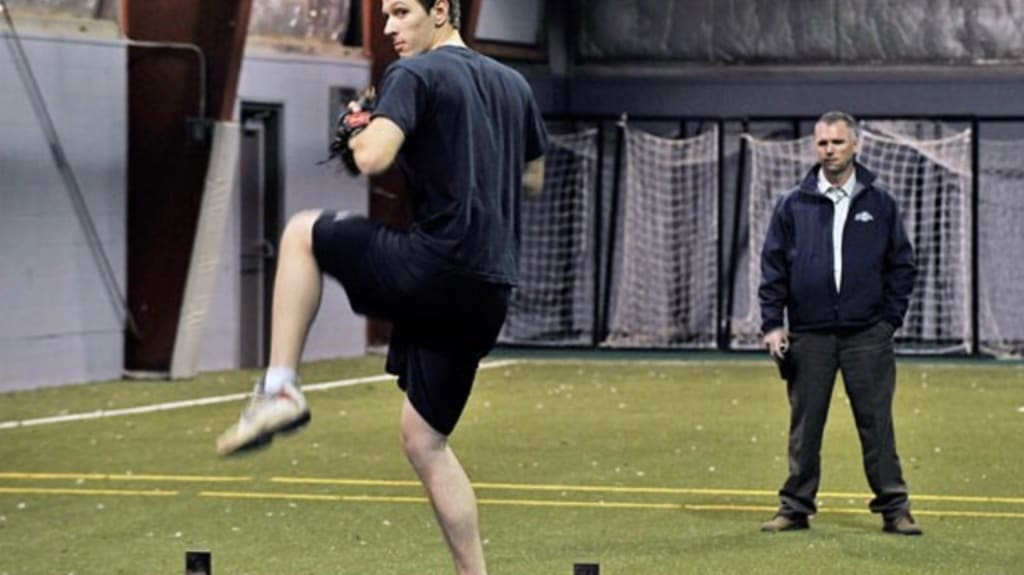
While we wait for the baseball season to get underway, MLB Pipeline is shining a spotlight on the hard-working scouts who are typically behind the scenes. We’ll talk to scouts across the game about their best Draft picks, biggest misses, best stories, go-to road food and more.
According to Jay Lapp, there’s been a lot of chance involved in his career.
His first baseball job was happenstance, after a friend told him about an opening with Walt Burrows, who was the Canadian supervisor for Major League Baseball’s Scouting Bureau at the time. It couldn’t have been much more than that, Lapp insists, especially since he certainly failed at least one portion of the test that day.
“I was expecting it to be an interview, but I walked into the room and there were 80 people there,” Lapp recalled. “Walt gave his spiel on the bureau, handed out a test, everybody filled it out, and then he showed three videos, really short bureau clips. With the names blocked out.
“The first guy is a big guy and he’s hitting in a cage. Every third ball he swings right through and just about comes out of his shoes, but he’s huge and when he hits it, it makes a loud noise. But you can’t see how far it goes. And the question is, Major Leaguer yes or no? I said no. The next one was a skinny shortstop, in a game, you see him hit a couple balls and run down the line. His running time comes up and you see him make a couple of throws from shortstop -- Major Leaguer yes or no? I said no. The last guy was a pitcher, so it’s got the radar velocities with the old Jugs gun, the guy was throwing 86 to 88 with a curveball and looked pretty big. I said yes.
“Walt collected all the tests and thanked everybody for coming and I’m outside and Dan Mendham [the friend who suggested Lapp attend the interview] said, ‘Did you know who the players were?’ I said, ‘I’ve got no idea.’ Well, the first guy was Frank Thomas and I thought, ‘Great, I said no.’ The second guy was Walt Weiss, ‘Great, I said no.’ And the third guy was Todd Van Poppel, who just got there barely. So I thought I had no chance at the job, and about a week later Walt called and offered it to me.”
Lapp remained with MLB’s Scouting Bureau from 1995 to ’99 before moving to British Columbia for a coaching job. When that came to an end in 2003, Lapp was making his cross-country trek from Kamloops, British Columbia, back home to London, Ontario, with no plan when he found Dick Groch’s phone number among his file folder of business cards. When Lapp learned Groch had recently taken a job with the Brewers, he asked if there were any openings.
“He said, ‘As a matter of fact, we’re going to go into Canada this fall,’” Lapp remembered. “'But you wouldn’t be interested.’ I asked why and he said, ‘It’s part time, it pays $2,500.’ And I said, ‘I’m in.’ He kept telling me no, it wasn’t what I should want at this point and I said, ‘I’ll take it.’”
For a year, Lapp lived with his parents and burned through the savings he’d accumulated while coaching, treating his position like a full-time job until it earned him one.
“Dick said to me, ‘What would you want to make?’” Lapp said. “And I had no idea he was going to ask me so I was on the spot, scrambling on my feet and I don’t know what to say. So I go, ‘I don’t know, $50,000 would be good,’ and he goes, ‘It pays $25,000, do you want it or not?’ That was our negotiation. I don’t even know why he asked me. So that’s how I started with the Brewers.”
From 2004 to ‘17, Lapp remained with Milwaukee, becoming its Canadian supervisor in 2010. In the fall of ’17, he joined the Blue Jays.

Best Draft pick
“I’m still hoping it’s Demi [Orimoloye],” Lapp said of the Brewers’ fourth-round pick in 2015. “He’s probably the most gifted physical athlete I’ve ever come across, it’s between him and Brett [Lawrie]. He’s more physical than Brett, but it’s just the sheer athletic ability. I always tell young guys in scouting that if you see a guy do something no one else can do, there’s something to that. Demi would do that.
“I remember seeing him play in Arizona, and he went for a fly ball over his head, turned the wrong way three times, and then at the last second stuck his glove up and caught it. It was like, how did you do that? Then there was a game in St. Petersburg [with the Canadian Junior National Team] against one of the pro teams and he got fooled by a changeup. His front foot bailed out, his [butt] goes flying, and somehow he was able to keep his hands back. His whole body’s gone, but he just flicked his wrists and the ball went out.
“The things he would do were in there, it’s just a matter of whether it will translate. He’ll show you in spurts. … If he gets to the point where he can repeat the things he’s capable already of doing, on a consistent basis, all the pieces are there to be a Major League player.”
Best story
“It’s a great story, but in actuality it was the easiest thing I’ve ever done as a scout,” Lapp said of signing 10-year big league veteran and fellow Canadian John Axford. “I got credit, but I watched a guy throw 92 with a hammer and it didn’t cost anything. There was nothing to lose. I wasn’t smarter than anyone else, I just showed up when some other people didn’t. … I did the least and I get the most credit.” More »
Biggest standout
“I really liked [Mike] Soroka,” Lapp said. “I think I said he was the best right-handed pitcher to come out of Canada that I had ever seen. And I was a big fan of [Orioles No. 13 prospect] Adam Hall. I compared him to Alan Trammell. When people said he was too small and he’s not going to be able to stay at shortstop, I told them he’s the same size as Alan Trammell when he started with the Tigers, and he played 20 years at shortstop. Those were two guys I felt really strongly about who we didn’t get.”
Biggest miss
“James Paxton,” Lapp said. “I saw Paxton in March of ’06 and I had him as a 40th rounder, a fringe left-handed staff filler, as his ceiling. He was 83 to 87, but that was right before he was injured, so I might not have had an accurate look. But when he was throwing 97 at Kentucky, that was the biggest jump I had ever seen. So I missed him, but if you read what I saw in my report, those were two different guys. I’m assuming it was the injury. We used [overall future potential grades] back then, and I had him as a 43 OFP, in the 40th round.”
Advice to industry hopefuls
“The easiest part of the job is the part people see,” Lapp said. “Going to the games and watching players is the easy part. The hard part is getting to know that player as a person, what makes him tick and what motivates him. There are no shortcuts to that, that’s just time. Showing up early, staying late, talking to other players, other coaches, getting to know the parents, the family, that’s the difference-maker. That’s how you can beat other teams and other scouts. I’ve never thought I was smarter than another scout or anybody, but I can definitely put more time in and get more information.”
